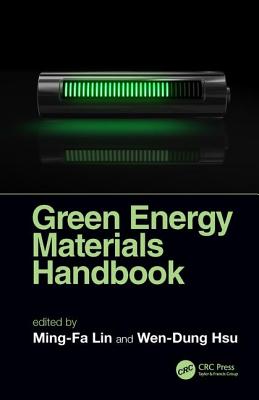-
出版商:
Morgan & Claypool
-
出版日期:
2015-09-01
-
售價:
$1,140
-
貴賓價:
9.5 折
$1,083
-
語言:
英文
-
頁數:
66
-
裝訂:
Paperback
-
ISBN:
1627058060
-
ISBN-13:
9781627058063
商品描述
Wind power penetration is rapidly increasing in today's energy generation industry. In particular, the doubly-fed induction generator (DFIG) has become a very popular option in wind farms, due to its cost advantage compared with fully rated converter-based systems. Wind farms are frequently located in remote areas, far from the bulk of electric power users, and require long transmission lines to connect to the grid. Series capacitive compensation of DFIG-based wind farm is an economical way to increase the power transfer capability of the transmission line connecting the wind farm to the grid. For example, a study performed by ABB reveals that increasing the power transfer capability of an existing transmission line from 1300 MW to 2000 MW using series compensation is 90% less expensive than building a new transmission line. However, a factor hindering the extensive use of series capacitive compensation is the potential risk of subsynchronous resonance (SSR). The SSR is a condition where the wind farm exchanges energy with the electric network, to which it is connected, at one or more natural frequencies of the electric or mechanical part of the combined system, comprising the wind farm and the network, and the frequency of the exchanged energy is below the fundamental frequency of the system. This oscillatory phenomenon may cause severe damage in the wind farm, if not prevented. Therefore, this book studies the SSR phenomenon in a capacitive series compensated wind farm. A DFIG-based wind farm, which is connected to a series compensated transmission line, is considered as a case study. The book consists of two main parts: Small-signal modeling of DFIG for SSR analysis: This part presents a step-by-step tutorial on modal analysis of a DFIG-based series compensated wind farm using Matlab/Simulink. The model of the system includes wind turbine aerodynamics, a 6th order induction generator, a 2nd order two-mass shaft system, a 4th order series compensated transmission line, a 4th order rotor-side converter (RSC) controller and a 4th order grid-side converter (GSC) controller, and a 1st order DC-link model. The relevant modes are identified using participation factor analysis. Definition of the SSR in DFIG-based wind farms: This part mainly focuses on the identification and definition of the main types of SSR that occur in DFIG wind farms, namely: (1) induction generator effect (SSIGE), (2) torsional interactions (SSTI), and (3) control interactions (SSCI).
商品描述(中文翻譯)
風能滲透率在當今的能源發電產業中迅速增加。特別是,雙饋感應發電機(DFIG)因其相較於全額定轉換器系統的成本優勢,已成為風電場中非常受歡迎的選擇。風電場通常位於偏遠地區,遠離大多數電力用戶,並需要長距離的傳輸線來連接到電網。基於DFIG的風電場的串聯電容補償是一種經濟的方法,可以提高連接風電場與電網的傳輸線的功率傳輸能力。例如,ABB進行的一項研究顯示,使用串聯補償將現有傳輸線的功率傳輸能力從1300 MW提高到2000 MW的成本比建造一條新的傳輸線便宜90%。然而,阻礙串聯電容補償廣泛使用的一個因素是潛在的次同步共振(SSR)風險。SSR是一種情況,當風電場與其連接的電網在一個或多個自然頻率下交換能量時,這些頻率屬於電氣或機械部分的組合系統,包括風電場和電網,且交換能量的頻率低於系統的基頻。如果不加以防止,這種振盪現象可能會對風電場造成嚴重損害。因此,本書研究了在串聯電容補償風電場中的SSR現象。考慮到一個連接到串聯補償傳輸線的基於DFIG的風電場作為案例研究。本書主要分為兩個部分:
1. DFIG的小信號建模以進行SSR分析:這部分提供了使用Matlab/Simulink對基於DFIG的串聯補償風電場進行模態分析的逐步教程。系統模型包括風力發電機的氣動力學、6階感應發電機、2階雙質量軸系統、4階串聯補償傳輸線、4階轉子側轉換器(RSC)控制器和4階電網側轉換器(GSC)控制器,以及1階直流鏈路模型。通過參與因子分析識別相關模態。
2. DFIG風電場中SSR的定義:這部分主要集中在識別和定義在DFIG風電場中發生的主要類型的SSR,即:(1)感應發電機效應(SSIGE),(2)扭轉互動(SSTI),以及(3)控制互動(SSCI)。






























